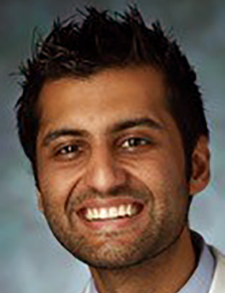Where are we and where are we going?
The LGBTQIA+ community has doubled since it was first measured in 2012, according to a 2022 Gallup poll—it now includes 7.1% of Americans.1 As the community expands, so has acceptance and legal protection against discrimination.
The LGBTQIA+ acronym stands for lesbian, gay, bisexual, transgender, queer/questioning, intersex, asexual, and the plus sign represents all members not otherwise included.2 The evolution of the acronym itself from LGB to LGBT to LGBTQ to LGBTQIA+ is an example of the inclusiveness and diverse spectrum of sexual orientations and gender identities found within the community.
And while diversity, equity, and inclusion (DEI) efforts throughout medical education and health care systems have brought the care of LGBTQIA+ patients into focus, we still have a long way to go.
A 2017 survey conducted by the Harvard T.H. Chan School of Public Health (Boston), National Public Radio (Washington, D.C.), and the Robert Wood Johnson Foundation (Princeton, N.J.), painted a clearer but not brighter picture of discrimination against LGBTQIA+ people in America. A striking 57% of participants reported “significant personal experiences of discrimination across many areas of life” related to their sexual orientation and gender identity. When it comes to health, about one in six (18%) reported avoiding medical care when in need due to the concern of facing discrimination. This number rose to nearly one in four for transgender or gender non-conforming individuals.3
Discrimination is not the only issue that affects the health of LGBTQIA+ individuals. Disparities also exist among health outcomes and risk factors. For example, members of the LGBTQIA+ community exhibit higher rates of suicidality, smoking, and depression.4,5 And LGBTQIA+ seniors are more likely to be single and childless, with more limited caretaker networks.6
Intersectionality—an individual’s overlapping characteristics such as age, race, gender, and education level—also affect experiences of discrimination and health outcomes.7
Current education and training
Despite these known levels of discrimination and disparity, health care professionals still receive minimal training specific to the care of members of the LGBTQIA+ community. This deficiency permeates undergraduate medical education (UME), graduate medical education (GME), and continuing medical education (CME) alike.
For example, in 2011, the median reported time dedicated to LGBTQIA+ content in American and Canadian UME curriculums was a mere five hours. A third of the programs reported no required clinical hours for LGBTQIA+ content whatsoever.8 In response, the Association of American Medical Colleges published guidelines for including LGBTQIA+ content in UME, and many medical schools have responded in kind. We don’t know how effective or widespread these efforts have been, since data regarding their effects has not yet been published.
Unfortunately, efforts at the GME level lag. Advocates hope that the Accreditation Council for GME will develop and implement LGBTQIA+ health-related residency requirements in the future.9
From the CME perspective, most professional societies—including SHM—now offer content focused on LGBTQIA+ topics.

Dr. Khanijow
Keshav Khanijow, MD, instructor of medicine, Johns Hopkins University School of Medicine, and hospitalist, Johns Hopkins Bayview Medical Center, Baltimore, spearheaded the development of the SHM LGBTQIA+ task force in 2018. To guide future educational interventions, the task force undertook the Quantifying Hospitalist Education and Awareness of LGBTQIA+ Topics in Health (Q-HEALTH) project to identify hospitalists’ attitudes and knowledge around LGBTQIA+ health.10
“We’re excited to publish the full results of the Q-HEALTH study when the time comes,” said Dr. Khanijow. “We noticed a need for improved clinical competency caring for LGTBQIA+ patients and a better understanding of LGBTQIA+ identity as a social determinant of health. We were pleased to confirm that hospitalists were enthusiastic about learning how to better support this population.”
In June 2021, based on knowledge gaps and the desire for future education expressed by hospitalists in the Q-HEALTH initial survey, the task force released the SHM LGBTQIA+ Health Series, a free collection of video lectures.11 The lectures are bite-sized (10 to 15 minutes long), and CME credit is available. The series includes content on LGBTQIA+-affirming language and documentation, inpatient care of transgender individuals, gender-affirming hormone therapy, HIV pre-exposure prophylaxis (PrEP) for the hospitalist, LGBTQIA+ identity as a social determinant of health, and advocacy for/with LGBTQIA+ persons.
LGBTQ+ youth

Dr. Titus
Work is also underway to assess and address what’s needed to better care for LGBTQIA+ youth. Lauren Titus, MD, a pediatric hospital medicine fellow at Medical College of Wisconsin, Milwaukee, is interviewing LGBTQIA+ youth ages 12 to 20 to understand their perceptions of and experiences with health care professionals, especially as they pertain to rapport and disclosure of LGBTQIA+ status. Her goal is to use both the interviews with LGBTQIA+ youth and responses from pediatric hospitalists to create a patient-centered curriculum on the health care needs of this population.
“I think LGBTQIA+ youth will have a lot to say about how health care professionals can do better,” Dr. Titus said. “I used to feel I was somehow inconveniencing kids and families by asking them about sexual orientation and gender identity. Now, I see it as a service, not an inconvenience. Feeling like you not only have to “come out” to your clinician, but also explain your sexual orientation and gender identity, is taxing. I hope that the LGBTQIA+ youth in this study help us develop tangible ways to demonstrate we’re invested in their care and committed to fighting the heteronormative and transphobic status quo in medicine.”
LGBTQIA+ frontline care

Dr. Terndrup
Christopher Terndrup, MD, assistant professor of medicine, assistant program director–ambulatory services, division of general internal medicine and geriatrics, Oregon Health Sciences University School of Medicine, Portland, Ore., became an LGBTQIA+ advocate as a medical student. He earned a scholarship to attend the GLMA: Health Professionals Advancing LGBTQ Equality (GLMA) Conference as a second-year medical student and has attended every year since. “With GLMA, I found a sense of community and received a lot of education specific to caring for this population. The training I received in medical school and residency just seemed to focus on gay men and sexually transmitted infections, but there is a lot more to it than that,” he said.
Despite a lack of formal education outside of GLMA conferences, Dr. Terndrup advertised himself as an LGBTQIA+ practitioner in his primary care practice at Oregon Health Sciences University. “About half of my patient panel are members of the LGBTQIA+ community, and one third are people living with HIV. I have continued to self-educate as I go, learning about gender-affirming care, new antivirals, and PrEP guidelines.”
As a clinician educator, Dr. Terndrup enjoys being at the forefront of GME change despite the significant amount of personal legwork required. He said, “The best part is teaching the residents how to care for these patients, and then watching them do it independently. Seeing them leave training with the skill set to care for this community is profoundly gratifying.”
Best practices
Best practice guidelines regarding LGBTQIA+ patient care are slowly coming to fruition. GLMA published “Guidelines for Care of Lesbian, Gay, Bisexual, and Transgender Patients”.12 Highlights include tips for creating LGBTQIA+-sensitive intake forms and fostering inclusive patient-provider discussions.
The Human Rights Campaign Foundation published “Creating Equal Access to Quality Health Care for Transgender Patients: Transgender-Affirming Hospital Policies”. This document provides guidance on both legal and regulatory nondiscrimination mandates and best practices for the inpatient care of transgender patients.13
GLMA has also published “Recommendations for Enhancing the Climate for LGBT Students and Employees in Health Professional Schools”.14 This document draws attention to oft-overlooked aspects of school and work environments for the LGBTQIA+ community. For example, offering health care policies that apply to same-sex spouses and domestic partners on an equal basis, and policies that don’t exclude transgender care.
Dr. Khanijow astutely noted, “We need to remember that there is more to this than just lectures on LGBTQIA+ patient care. To ensure DEI in the workplace, we need to advocate for workplace policies that support this community, too.”
The LGBTQIA+ practitioner experience
Drs. Khanijow and Terndrup were kind enough to share their own experiences as health care professionals who identify as part of this community. Dr. Khanijow said, “I wasn’t sure if I should list my sexual orientation and gender identification on my medical school application. Fortunately, my school was ahead of the game in that it had already established a network of LGBTQIA+ faculty with whom I could connect.”
That said, he has also faced some discrimination from patients. “Although I identify as a cis-male, I do have gender non-conforming mannerisms that people do comment on sometimes. Over time, I’ve learned to be comfortable with myself, which helps me be the best at work and provide patient-centered care.”
Dr. Terndrup, who also identifies as a gay cis-male, was less lucky as a medical student. He said, “I grew up as a queer boy in the south and came out in high school. I didn’t have many role models for what it’s like to be a gay man in medicine. I observed some very clear discrimination from a family medicine doctor in rural Louisiana as a medical student. I’ll never forget that.” These experiences inspired him to co-create the first LGBTQIA+ student group at his medical school.
“I do want to note that it’s easier for me than others to be an LGBTQIA+ provider due to my privilege as a white cis-gender male,” Dr. Terndrup said. “It’s important for me to call out that privilege, and realize my experience is not the same as others in our community.”
Making progress
Though slow-coming, work continues to be done to identify areas for improvement. The Population Research in Identity and Disparities for Equality (PRIDE) Study, conducted at Stanford University (Stanford, Calif.) and the University of California, San Francisco, is the first large-scale, longitudinal cohort study of people who identify as part of the LGBTQIA+ community.15 The study aims to understand how being an LGBTQIA+ person influences physical, mental, and social health. Since most health studies do not collect data regarding sexual orientation and gender identification, PRIDE hopes to bridge the information gap. The study continues to enroll patients actively online.
In addition to medical education changes, a growing number of health care institutions are also creating and adopting LGBTQIA+-inclusive policies and practices, as benchmarked by the Human Rights Campaign Foundation’s Healthcare Equity Index.16
Future directions
So, how do we push forward?
“The health care disparities in the LGBTQIA+ community are driven by a social stigma that is not welcoming to them. If we want to improve health outcomes for these patients, we need to address social determinants of their health care,” said Dr. Terndrup.
Regarding medical education, he said, “The key is both integration and dedication. It’s not just a lecture about PrEP or pronouns for gender diverse folx (the spelling of which indicates gender diversity). It’s also about including an LGBTQIA+ patient in the hypertension lecture when their high blood pressure has nothing to do with their sexual orientation or gender identity.”
References
- Kevin Le, PharmD, BCPS, BCPPS. What Does the Full LGBTQIA+ Acronym Stand For? https://www.goodrx.com/health-topic/lgbtq/meaning-of-lgbtqia. Published June 23, 2021. Accessed April 27, 2022.
- Jeffrey M. Jones. LGBT Identification in U.S. Ticks Up to 7.1%. https://news.gallup.com/poll/389792/lgbt-identification-ticks-up.aspx. Published February 17, 2022. Accessed April 27, 2022.
- Discrimination in America: Experiences And Views of LGBTQ Americans. https://legacy.npr.org/documents/2017/nov/npr-discrimination-lgbtq-final.pdf. Published November, 2017. Accessed April 27, 2022.
- Ramchand R, et al. Suicidality among sexual minority adults: gender, age, and race/ethnicity differences. Am J Prev Med. 2022;62(2). doi:10.1016/j.amepre.2021.07.012
- Gonzales G, Henning-Smith C. Health disparities by sexual orientation: results and implications from the behavioral risk factor surveillance system. J Community Health. 2017;42(6). doi:10.1007/s10900-017-0366-z
- Soon Kyu Choi, Ilan H. Meyer. LGBT Aging: A Review of Research Findings, Needs, and Policy Implications. https://williamsinstitute.law.ucla.edu/wp-content/uploads/LGBT-Aging-Aug-2016.pdf. Published August 2016. Accessed April 27, 2022.
- Intersect. Intersectionality. http://www.lgbtiqintersect.org.au/learning-modules/intersectionality. Accessed April 27, 2022.
- Obedin-Maliver J, et al. Lesbian, gay, bisexual, and transgender-related content in undergraduate medical education. JAMA. 2011;306(9). doi:10.1001/jama.2011.1255
- Pregnall AM, et al. A call for LGBTQ content in graduate medical education program requirements. Acad Med. 2021;96(6):828-835. doi:10.1097/ACM.0000000000003581.
- Keshav Khanijow, MD. Quantifying hospitalist education and awareness of LGBTQ topics in health: the Q-HEALTH project. https://www.eventscribe.net/2021/SHMConverge/fsPopup.asp?efp=UExFVEdTVEExMjAzNA%20&PosterID=369079%20&rnd=0.8626193&mode=posterinfo. Accessed April 27, 2022.
- SHM. LGBTQ+ Series. https://www.shmlearningportal.org/content/lgbtq-health-series#group-tabs-node-course-default1. Accessed April 27, 2022.
- GLMA. Guidelines for care of lesbian,gay, bisexual,and transgender patients. https://www.glma.org/_data/n_0001/resources/live/GLMA%20guidelines%202006%20FINAL.pdf. Published 2006. Accessed April 27, 2022.
- Lambda Legal, et al. Creating equal access to quality health care for transgender patients. https://assets2.hrc.org/files/assets/resources/TransAffirming-HospitalPolicies-2016.pdf?_ga=2.187505512.1550757739.1646930478-1981362255.1646416077. Revised May 2016. Accessed April 27, 2022.
- Shane Snowdon, MA. Recommendations for Enhancing the Climate for LGBT Students and Employees in Health Professional Schools: A GLMA White Paper. https://www.glma.org/_data/n_0001/resources/live/Recommendations%20for%20Enhancing%20LGBT%20Climate%20in%20Health%20Professional%20Schools.pdf. Published 2013. Accessed April 27, 2022.
- Stanford University. The Pride Study. https://pridestudy.org/study. Accessed April 27, 2022.
- Human Rights Campaign Foundation. Healthcare Equality Index 2020. https://hrc-prod-requests.s3-us-west-2.amazonaws.com/resources/HEI-2020-FinalReport.pdf. Published 2020. Accessed April 27, 2022.